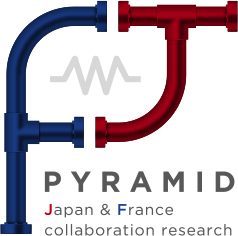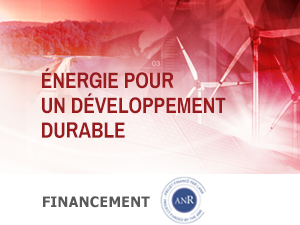The PYRAMID project is an International Collaborative Research Project (PRCI), which brings together French public laboratories (MATEIS and LVA at INSA Lyon, and CEA), an International Joint Unit (ELyTMaX), Japanese public laboratories (IFS, and GSE at Tohoku University, GSST at Gunma University), and the Nuclear Technology Research Laboratory at CRIEPI a non profit research foundation, supported by the electrical japanese industries.
PYRAMID project aims to develop new tools and techniques to detect and quantify wall thinning due to Slurry Flow induced Corrosion (SFC) in piping systems. SFC is a special case of Flow Accelerated Corrosion (FAC) in presence of a flow with a high concentration of debris of various kinds (concrete, corrosion, metallic…).
The final goal is to provide a risk management system based on prediction-monitoring of wall thinning due to SFC.
Corrosion modes and rate will be predicted by numerical simulations at any position for actual layouts of piping systems such as elbows. These predictions will be validated by electrochemical experiments under controlled mass transfer coefficient.
Also Ultrasonic Non Destructive Testing (UT) methods will be designed with the help of simulations and their performances will be investigated in corrosion test facilities. The adequate signal processing techniques based on Bayesian approaches will be developed.
UT techniques are widespread in industry because they allow the control in the bulk of the component and help to improve productivity and compliance of products with quality and safety requirements. Among them, Electro-Magnetic Acoustic Transducers (EMAT) allow the generation and sensing of elastic waves in a part without mechanical contact with it; therefore, they can be used at high temperature and in various harsh environments where standard piezoelectric transducers fail. The use of EMAT constitutes a versatile solution adapted to complex cases.
The availability of validated simulation tools to predict the wave field they generate and their sensitivity to an arbitrary wave field is crucial if one wants to benefit of their advantages and limit their drawbacks. Once such tools are developed, they can be efficiently coupled to other tools dedicated to elastic wave propagation and scattering, the
complete set of simulation tools allowing the full simulation of non destructive inspections in complex cases.
Elastic Guided Waves (GW) are used in the non-destructive testing of pipes. Numerical study of GW scattering is often computationally expensive because of very short wavelengths compared to the size of the pipe. Furthermore, the number of scattered modes from non-axisymmetric defect (as typical corrosion area, crack…) can be too large for standard finite element method (FE). Accordingly, the simulation platform CIVA deals with models based on a Modal Formalism to simulate non-destructive inspection by GW using the Semi-Analytical Finite Element method (SAFE). Presently, EMAT sources are taken into account in an efficient hybrid SAFE/FE method for computing the scattered modes by an arbitrary complex defect that has been implemented for several years in CIVA NDT simulation platform by CEA.
To increase the method reliability, simulations will help selecting the best technical solution, based on Probability of Detection and flaw characterization performance. Special ultrasonic imaging techniques will also be applied.
This dual approach, which combines simulation and characterization, should make it possible to optimize the inspection process in corroded steel pipes.
From all the data gathered during the project, an industrial risk evaluation of any kind of piping system subject to corrosion will be performed.
The results of the research carried out in the project will be directly applicable to any kind of piping system subject to corrosion that has to be detected, quantified and the subsequent risk evaluated.



